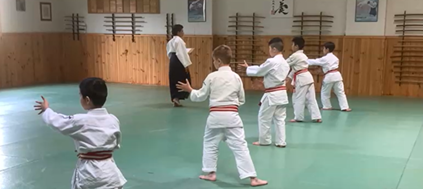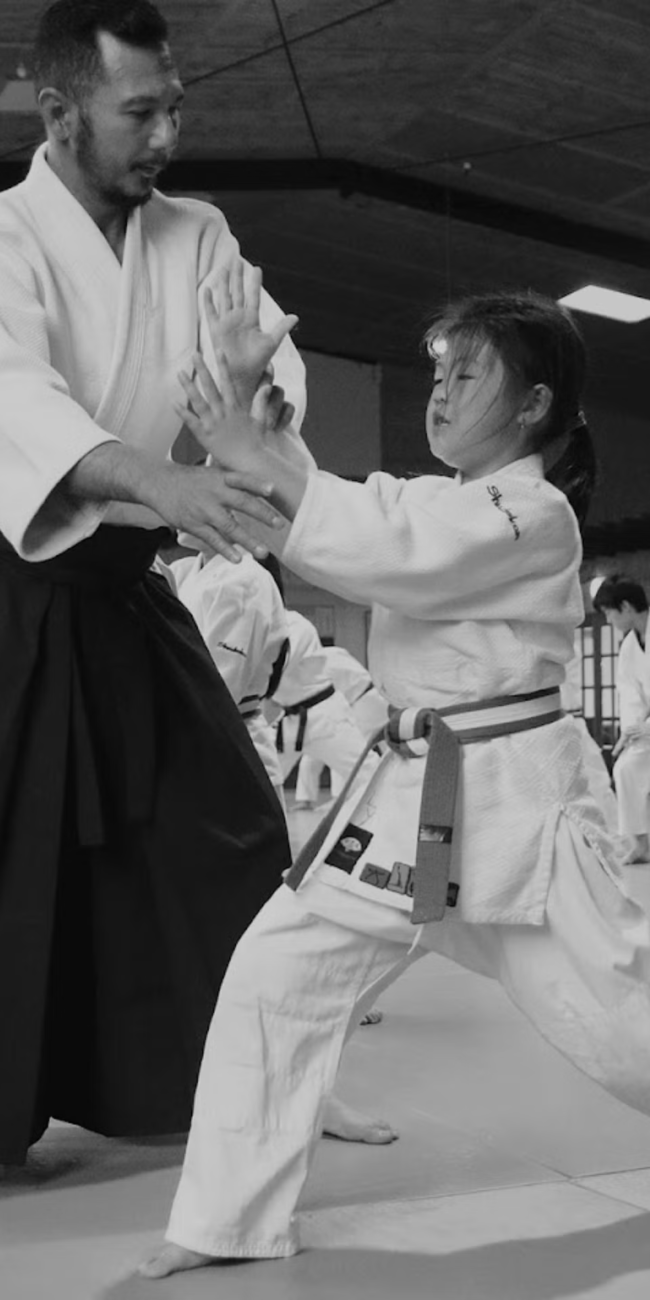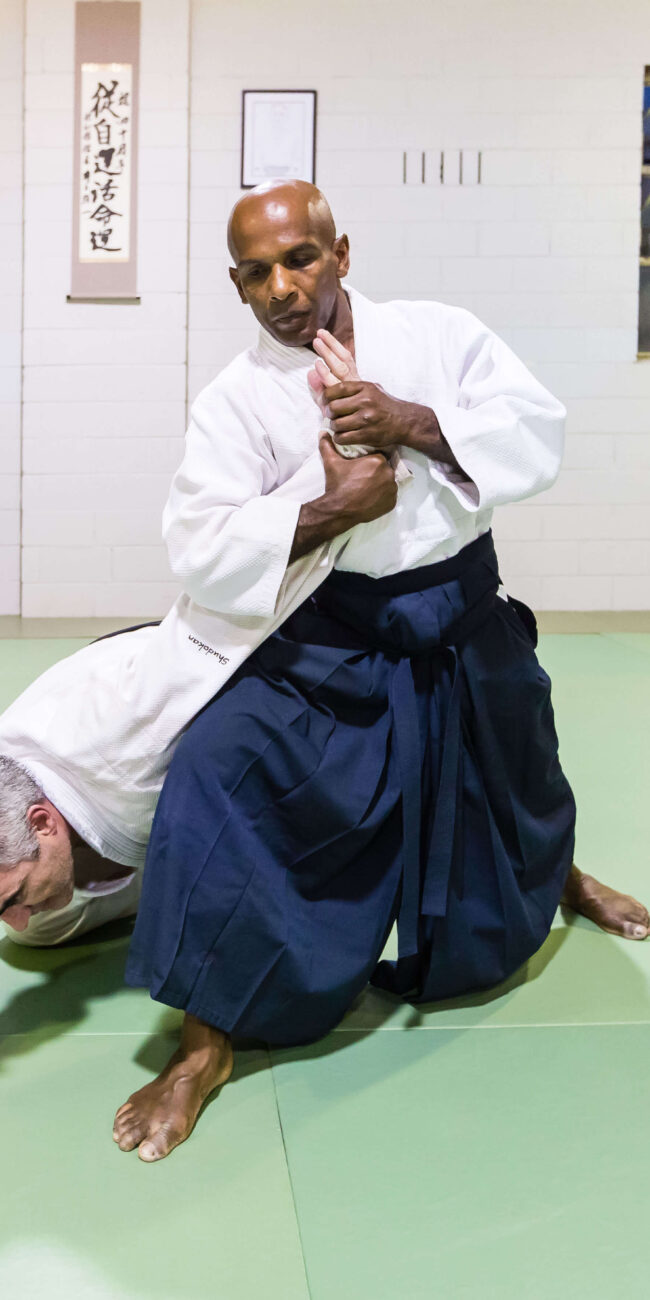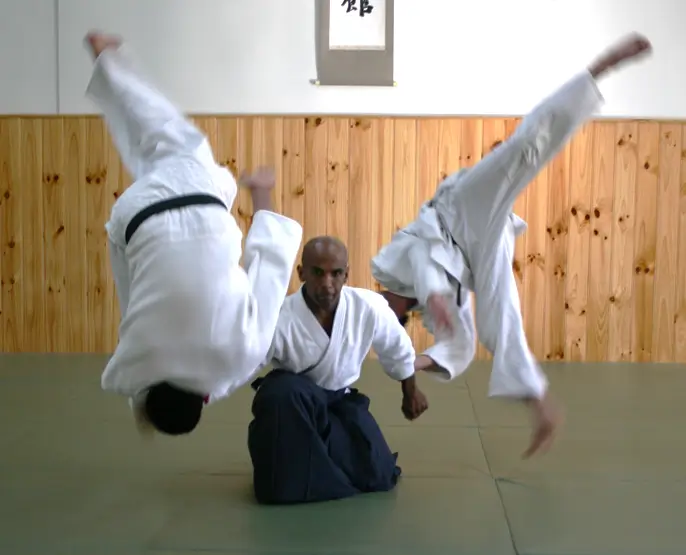
Focusing on self-defence rather than victory, Japan’s newest martial art attracts practitioners from around the world to Melbourne, the birthplace of the first Aikido Shudokan. Developed by Morihei Ueshiba in the early 20th century, Aikido; translated as “way of harmonising energy”, stands as one of Japan’s newest official martial arts, or Budo.
The year is 2021, fresh out of the many lock-downs in Melbourne, two men faced off with wooden sticks resembling katana swords, their eyes fixed in a serious gaze. They raised and lowered the sticks in a fluid sequence, the clash of wood echoing sharply.
One man launched a decisive strike, swiftly deflected by his opponent’s agile spin. Mesmerized, I observed as their duel transitioned from sticks to hand-to-hand combat.
Joe Thambu and Ziggy, the chief and senior instructors at Aikido Shudokan Dojo in Heidelberg, Melbourne, where Aikido Shudokan was established in 1980 by Joe Thambu Sensei. Both instructors are committed to advancing this intricately articulated practice and philosophy.
Unlike other martial arts, Aikido aims to resolve conflict non-violently by “matching the opponent’s force,” Joe Sensei explained, emphasizing the redirection of strikes rather than overpowering adversaries. Aikido is fundamentally oriented towards self-defence; there are no winners or losers, and no competitions take place.
Following Joe Sensei and Ziggy Sensei’s demonstration, I prepared for my first aikido lesson. Nervously joking with Sensei Joe about emulating their effortless grace, he reassured me that breaking down the motions into small, simple steps would make everything feel more achievable.
The smooth green tatami mat felt cool beneath my bare soles as Joe Sensei guided me through the initial steps. He instructed me to stand with my feet hip-width apart in a parallel position, then turn my right foot and body towards the front. We practiced moving forward by stepping with the right foot first, followed by dragging the left foot behind (and vice versa). Additionally, we learned to turn and face the opposite direction by pivoting on the front foot while spinning the body and back foot 180 degrees.
Gradually, we incorporated hand and body movements and eventually practiced with a partner. Throughout, I focused on maintaining light and precise footwork, knowing that smooth movements would make everything else easier.
Despite my efforts, I still felt a bit clumsy compared to the earlier demonstration.
I asked Joe and Ziggy Sensei how long it typically takes for the movements to feel natural. “It varies from person to person,” Ziggy Sensei replied.
“For instance, I started studying this martial art in my 30s, and it has always felt effortless to me. Aikido is about harmonising with the other person’s energy, much like children clapping each other’s hands; it’s as natural as child’s play.”
Joe Sensei, on the other hand, has never known life without Aikido. “I’ve been practicing it for as long as I can remember,” he explained.
Joe Sensei comes from a deeply rooted Aikido practitioners. His uncle, Thamby Rajah Sensei, also fondly referred to as the Father of Aikido in Malaysia, began his love for Aikido in the early 1950s when he went to the Kodokan in Tokyo, and earning his Black Belt in Judo under the tutelage of Ichijima Sensei and the famous Mifune Kyuzo Sensei. Thamby Rajah has the distinction of being the very first Malaysian to be awarded a Black Belt in Judo. An amazing feat.
Whilst training at the Kodokan, Thamby Rajah was introduced to Aikido by some American Judoka. On entering the Yoshinkan, he was immediately astounded by the speed and technique of Shioda Gozo Kancho. He immersed himself in the hard training offered by the Kodokan and the Yoshinkan.
Curious, I asked Joe Sensei about his uncle’s teachings, “Thamby Sensei was friendly and open-minded, but during Aikido practice, he would transform into a stricter, fiercer version of himself,” Sensei Joe recounted. As Joe Sensei spoke of Thamby Sensei, my eyes were drawn to the giant black-and-white photo of Aikido’s founder hanging at one end of the dojo.
During the Aikido session, Joe Sensei instructed me on moving with grace, self-awareness, and intention, a stark contrast to my usual frantic and often aimless approach to life.
As I watched the sunlight dance on the portrait of Morihei Ueshiba, and the wind sway the curtains in the large spacious dojo, creating a soothing rhythm, I felt privileged to have immersed myself in Ueshiba’s philosophy in the birth place of Aikido Shudokan dojo in Melbourne. I hoped that the teachings of Aikido would equip me to confront the challenges of daily life with greater ease. With this resolve, I committed to embracing a new chapter, taking small and deliberate steps toward a more harmonious version of myself.
